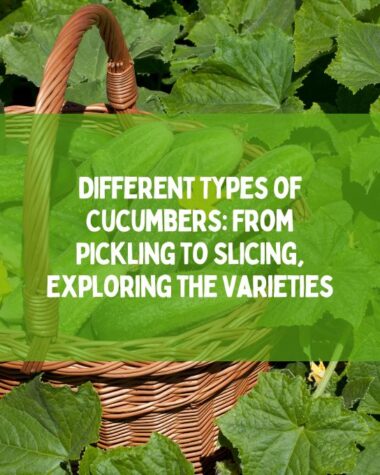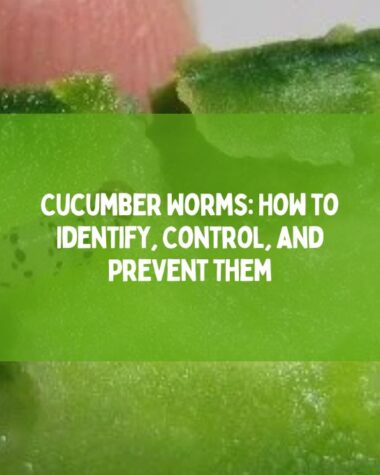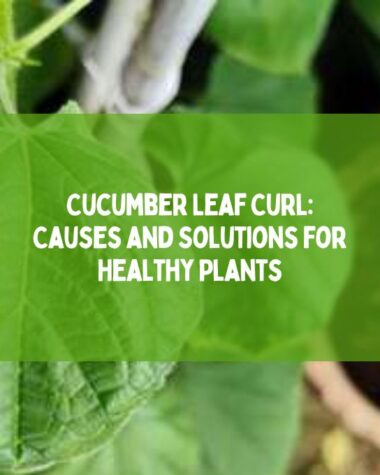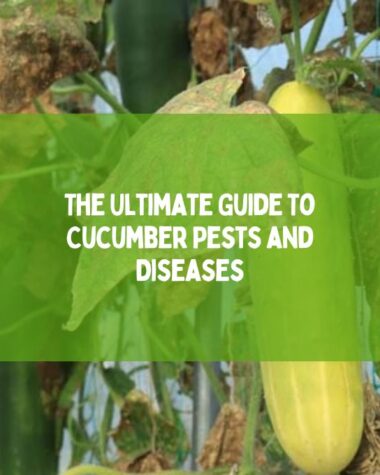Cucumbers are a deliciously fresh and versatile vegetable. However, their seeds can be a nuisance to deal with when using them in salads, sandwiches or smoothies.
Seedless cucumbers offer a perfect solution to this problem, as they are created through a natural mutation of regular cucumbers. In this article, we’ll explore what seedless cucumbers are, how they differ from regular cucumbers, and how to grow them.
What are Seedless Cucumbers?

Seedless cucumbers, also known as parthenocarpic cucumbers, are a type of cucumber that has been selectively bred to produce very small or no seeds. These are becoming increasingly popular in the world of gardening and agriculture. These cucumbers are the result of a genetic mutation that inhibits the development of seeds in the fruit.
This unique characteristic sets them apart from traditional cucumbers, which are filled with seeds and can sometimes be a hassle to prepare.
Seedless cucumbers are also a versatile ingredient in the kitchen. They can be eaten fresh, pickled, or used in a variety of culinary dishes. Their mild flavor and crisp texture make them a great addition to salads, sandwiches, and wraps. They can also be sliced and used as a topping for burgers, or diced and added to salsas and relishes.
Nutritional Benefits of Seedless Cucumbers
Seedless cucumbers offer a range of health benefits. They are low in calories and high in essential vitamins and minerals such as vitamin C, K, and potassium. Additionally, the high water content of seedless cucumbers makes them a great hydrating food.
Eating seedless cucumbers regularly may also help to improve digestion and reduce inflammation in the body.
Seedless Cucumber Varieties
There are many different seedless cucumber varieties available, each with their own unique taste and growing requirements.
Some popular seedless cucumber varieties include;
- Sweeter Yet
- Tasty Green
- Socrates
- Calypso
Before selecting a particular variety, be sure to research its specific growing requirements and suitability for your region.
Comparing Seedless and Seeded Cucumbers
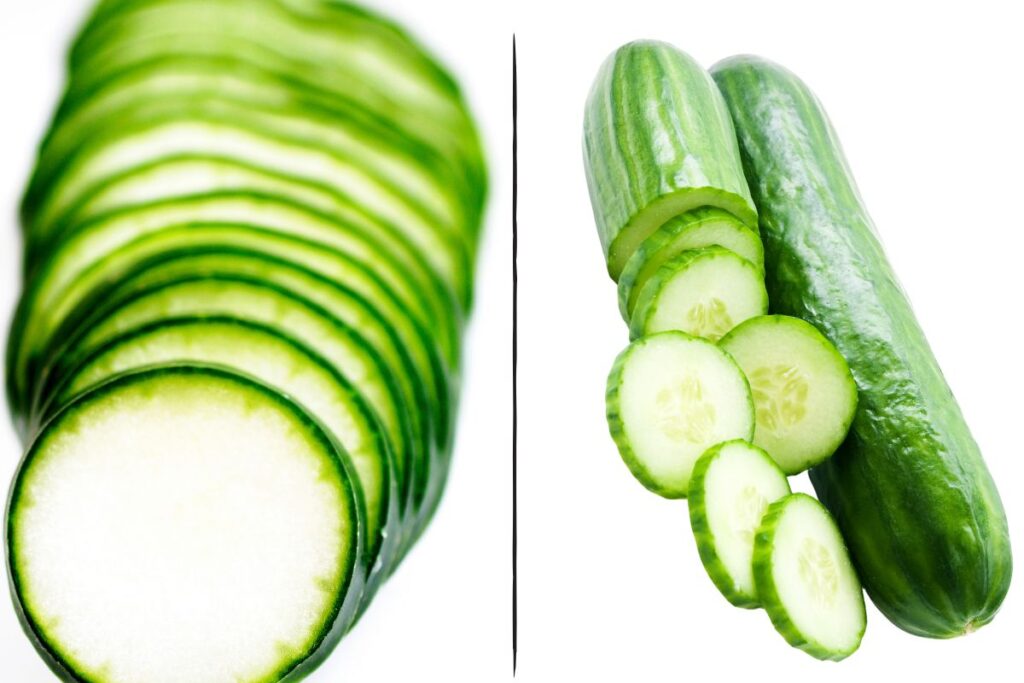
When it comes to cucumbers, there are two main types: seeded and seedless. While both are delicious and nutritious, there are some key differences between the two that are worth exploring.
Let’s start with seeded cucumbers.
Seeded Cucumbers
These are the cucumbers that most of us are familiar with. They have a thicker skin and are often slightly more bitter than their seedless counterparts. Seeded cucumbers also tend to have a looser texture and can sometimes be a bit mushy if they are not eaten quickly after being harvested.
Seedless Cucumbers
Seedless cucumbers, on the other hand, have several unique qualities that set them apart. As mentioned earlier, they have a thinner skin that is often less bitter, making them more palatable for many people.
Their flesh is usually firmer and crisper, which can make them a great addition to salads or as a crunchy snack. Additionally, seedless cucumbers typically have a higher water content, which can make them more refreshing and hydrating.
Another advantage of seedless cucumbers is that they are often easier to digest than seeded cucumbers. This is because the seeds in regular cucumbers can sometimes be tough and difficult to break down, especially for people with sensitive digestive systems.
It’s worth noting that seedless cucumbers are not truly seedless – they still have small, undeveloped seeds that are not noticeable when eaten. However, these seeds are much smaller and less noticeable than the large, mature seeds found in regular cucumbers.
Related Reading:
- What Is The Best Cucumber Plant Spacing For High Yields?
- Bad Cucumbers – Symptoms, Prevention, and Side Effects
- Kheera, Cucumber, and Kakdi – Understanding the Differences
- Understand Cucumber Pollination Process: How Cucumbers Pollination Works?
- What Are Cucumber Water Requirements? FAQs Answered
How to Grow Seedless Cucumbers? A Step By Step Guide
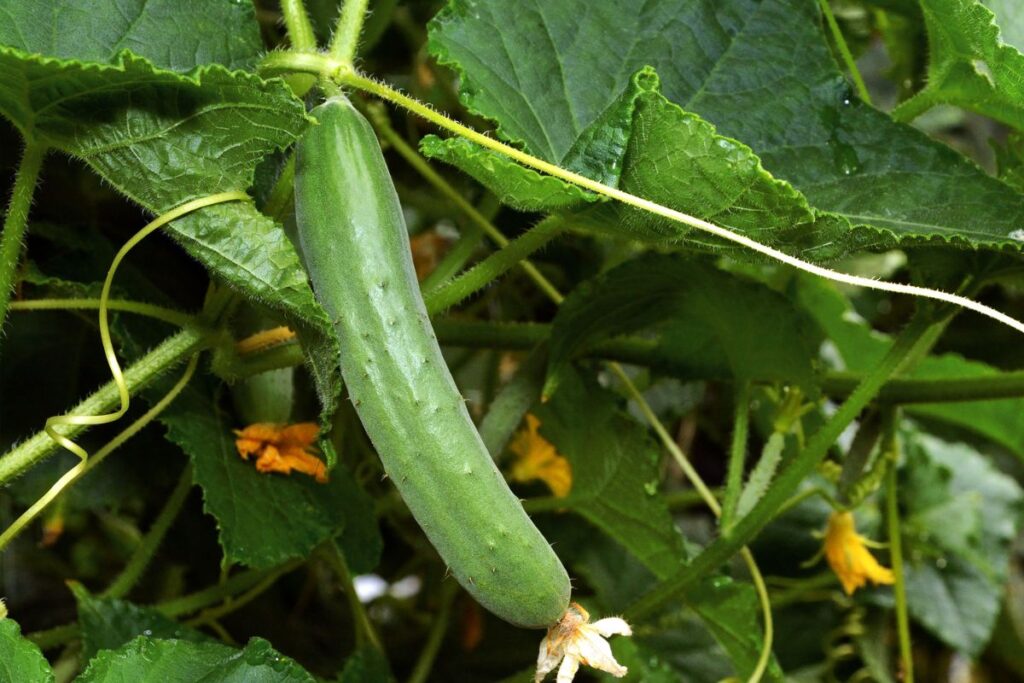
Seedless cucumbers are a popular choice for many gardeners due to their crisp texture and lack of pesky seeds. If you’re interested in growing seedless cucumbers in your own garden, there are a few important considerations to keep in mind.
Firstly, it’s important to note that seedless cucumbers are usually grown through hybridization, which involves cross-breeding different varieties of cucumber plants. This means that you’ll need to select a suitable seed variety that has been specifically bred to produce seedless cucumbers.
Once you’ve selected your seed variety, it’s time to start thinking about the growing environment. Seedless cucumbers need to be grown in an environment that provides a consistent temperature, plenty of light, and adequate moisture. This means that you’ll need to choose a sunny spot in your garden and ensure that the soil is well-draining and rich in organic matter.
Another important consideration when growing seedless cucumbers is providing support for the plants. Seedless cucumber plants can grow quite tall, so using a trellis or other support structure can help to prevent the plants from toppling over and ensure that they grow straight and strong.
Overall, growing seedless cucumbers can be a rewarding and enjoyable experience. By following these tips and providing your plants with the right growing conditions, you can produce a bountiful crop of delicious, seedless cucumbers that are perfect for snacking, salads, and pickling.
Harvesting and Storage of Seedless Cucumbers
Seedless cucumbers are a popular variety of cucumber that are prized for their crisp texture and mild flavor. They are a great addition to salads, sandwiches, and even as a healthy snack on their own. However, to fully enjoy the benefits of seedless cucumbers, it’s important to know how to properly harvest and store them.
Harvesting Seedless Cucumbers
The best time to harvest seedless cucumbers is when they are still young and green. This is when they are at their peak ripeness and have the best flavor and texture. To harvest them, simply grasp the cucumber and gently twist it off the vine. Be careful not to damage the vine or the other cucumbers on the plant.
It’s important to harvest seedless cucumbers regularly to encourage more growth and to prevent the plant from becoming overcrowded. Depending on the variety, seedless cucumbers can be harvested every 2-3 days.
Storing Seedless Cucumbers
Once you’ve harvested your seedless cucumbers, it’s important to store them properly to maintain their quality and freshness. The ideal storage temperature for seedless cucumbers is between 45-50°F. You can store them in the refrigerator, but be sure to keep them away from ethylene-producing fruits like apples and bananas, as this can cause them to spoil faster.
If you don’t have access to a refrigerator, you can store seedless cucumbers in a cool, dry place like a pantry or cellar. Just be sure to keep them away from direct sunlight and moisture, as this can cause them to rot.
It’s best to consume seedless cucumbers within a week or two of harvesting for maximum freshness. If you have more cucumbers than you can eat, you can also pickle them to extend their shelf life.
In conclusion, harvesting and storing seedless cucumbers is a simple process that can greatly enhance their flavor and texture. With these tips, you can enjoy the benefits of seedless cucumbers for weeks to come.
Creative Ways to Use Seedless Cucumbers in the Kitchen
Seedless cucumbers are a versatile vegetable that can be used in a variety of ways in the kitchen. Their crisp texture and mild flavor make them a popular ingredient in many recipes.
Here are some creative ways to use seedless cucumbers in your cooking:
Seedless Cucumber Salad Recipes: Ideas for Mixing and Matching Ingredients
- Greek salad with seedless cucumbers, feta cheese, and olives
- Asian cucumber salad with rice vinegar, sesame oil, and cilantro
- Garden salad with mixed greens, cherry tomatoes, and sliced seedless cucumbers
- Mediterranean cucumber salad with red onion, parsley, and lemon juice
- Mango and seedless cucumber salad with lime dressing
Seedless Cucumber Sandwiches and Wraps: How to Create Fresh and Tasty Combinations?
- Veggie wrap with hummus, avocado, and sliced seedless cucumbers
- Turkey and seedless cucumber sandwich with honey mustard dressing
- Cream cheese and seedless cucumber sandwich with fresh dill
- Tuna salad wrap with seedless cucumbers, lettuce, and tomato
- Grilled chicken sandwich with seedless cucumber slices and tzatziki sauce
Pickling Seedless Cucumbers: Tips for Making the Perfect Pickles
- Simple refrigerator pickles with vinegar, salt, and sugar
- Spicy pickled seedless cucumbers with jalapeño and garlic
- Bread and butter pickles with seedless cucumbers, onions, and mustard seeds
- Sweet and sour pickles with seedless cucumbers, carrots, and bell peppers
- Dill pickles with fresh dill, garlic, and peppercorns
Seedless Cucumber Salsa: A Twist on Classic Mexican Dip
- Traditional tomato-based salsa with diced seedless cucumbers added in
- Mango and seedless cucumber salsa with lime and cilantro
- Avocado and seedless cucumber salsa with jalapeño and lime
- Corn and seedless cucumber salsa with red onion and black beans
- Watermelon and seedless cucumber salsa with mint and feta cheese
Seedless Cucumber and Mint Smoothie: A Refreshing Drink for Hot Days
- Blend seedless cucumbers with fresh mint leaves, ice, and water
- Add Greek yogurt for a creamier texture
- Sweeten with honey or agave nectar to taste
- Add lime juice for a tangy twist
- Serve chilled and garnish with cucumber slices and mint leaves
Other Creative Uses for Seedless Cucumbers
- Spiralize seedless cucumbers to make low-carb “noodles”
- Use seedless cucumber slices as a low-calorie substitute for crackers or chips
- Mix seedless cucumbers into guacamole for added crunch
- Use seedless cucumber rounds as a base for appetizers like smoked salmon or tuna tartare
- Add seedless cucumber slices to a Bloody Mary for a refreshing twist on the classic cocktail.
Related Reading:
- How To Grow Aubergine From Seed?
- How To Clone Tomato Plants From Cuttings?
- Maximizing Your Harvest With the Best Fertilizer For Pumpkins
- How To Harvest Carrots In Your Garden?
Final Thoughts
Seedless cucumbers are a delicious and convenient alternative to traditional, seeded cucumbers. When grown properly, they can provide a bountiful harvest of crisp, refreshing vegetables that are perfect for summer salads and snacks.
Whether you’re a seasoned gardener or trying your hand at growing cucumbers for the first time, growing seedless cucumbers is a rewarding and worthwhile endeavor.
Frequently Asked Questions About Growing Seedless Cucumbers
Can seedless cucumbers be grown hydroponically?
Yes, seedless cucumbers can be grown hydroponically, making them an ideal crop for indoor gardening or urban farming projects.
Can seedless cucumbers be grown in containers?
Yes, seedless cucumbers can be successfully grown in containers. However, be sure to choose a large enough container and provide support for the plants, as cucumbers can grow quite tall.
What pests and diseases are a threat to seedless cucumber plants?
Common pests that can threaten seedless cucumber plants include aphids, spider mites, and cucumber beetles. Fungal diseases such as powdery mildew and downy mildew can also affect the plants, particularly in humid or wet conditions.
How often should seedless cucumbers be watered?
Seedless cucumbers should be watered regularly, usually about once a week. However, the frequency may vary depending on your climate, soil type, and other environmental factors.
When is the best time to plant seedless cucumber seeds?
The best time to plant seedless cucumber seeds is in the spring, after the last frost has passed. However, the exact timing may vary depending on your region and climate.


